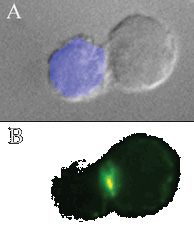CD3E (activation epitope) Mouse Monoclonal Antibody [Clone ID: APA1/1]
CAT#: AM12005PU-N
CD3E (activation epitope) mouse monoclonal antibody, clone APA1/1, Aff - Purified
Conjugation: PE
Need it in bulk or conjugated?
Get a free quote
CNY 3,410.00
货期*
5周
规格
Specifications
| Product Data | |
| Clone Name | APA1/1 |
| Applications | FC, IF, IHC, IP, WB |
| Recommend Dilution | Flow Cytometry. Sample preparation: At the end of stimulation of T cells, perform staining of surface markers (if required) in PBS + 0.1% BSA for 20 min. on ice. Wash with PBS and fix with 2% formaldehyde, 30 min on ice. Wash with PBS and incubate in PBS + 0,1% saponine, 5 min. RT. Incubate the cells in PBS + 1% BSA + 0.03% saponine, 15 min. on ice. Incubate with fluorescence-labeled APA1/1 antibody (1-5 µg/ml) in PBS + 1% BSA + 0.03% saponine in dark, 20 min. RT. Wash with PBS + 1% BSA + 0.03% saponine, resuspend in PBS. Positive control: Human T cells stimulated with anti-CD3 (MEM-57) antibody (1 µg/ml). Immunoprecipitation. Western blot. Immunohistochemistry on frozen sections. Immunocflourescence. Application note: Fixed and permeabilised cells. The antibody can distinguish TCR-stimulated from non-stimulated cells. |
| Reactivity | Human, Mouse |
| Host | Mouse |
| Clonality | Monoclonal |
| Immunogen | Purified human CD3 proteins isolated from thymus |
| Specificity | The antibody recognizes an activation-dependent intracellular epitope of CD3 epsilon. Exposure of the epitope precedes CD3 phosphorylation and recruitment and activation of ZAP70, which initiates the signaling cascade produced by T-cell activation. APA1/1 provides the earliest known marker for TCR-mediated T cell activation. |
| Formulation | PBS, pH 7.4 State: Aff - Purified State: Liquid Ig fraction Preservative: 15 mM sodium azide |
| Concentration | lot specific |
| Purification | Protein A affinity chromatography (> 95% pure by SDS-PAGE) |
| Conjugation | Unconjugated |
| Storage Condition | Store at 2 - 8 °C for up to one month or (in aliquots) at -20 °C. Avoid repeated freezing and thawing. |
| Gene Name | CD3e molecule |
| Database Link | |
| Background | CD3 complex is crucial in transducing antigen-recognition signals into the cytoplasm of T cells and in regulating the cell surface expression of the TCR complex. T cell activation through the antigen receptor (TCR) involves the cytoplasmic tails of the CD3 subunits CD3 gamma, CD3 delta, CD3 epsilon and CD3 zeta. These CD3 subunits are structurally related members of the immunoglobulins super family encoded by closely linked genes on human chromosome 11. The CD3 components have long cytoplasmic tails that associate with cytoplasmic signal transduction molecules. This association is mediated at least in part by a double tyrosine-based motif present in a single copy in the CD3 subunits. CD3 may play a role in TCR-induced growth arrest, cell survival and proliferation. |
| Synonyms | T3/Leu-4 |
| Reference Data | |
| Protein Families | Druggable Genome, Transmembrane |
| Protein Pathways | Hematopoietic cell lineage, Primary immunodeficiency, T cell receptor signaling pathway |
Documents
| Product Manuals |
| FAQs |
| SDS |
Resources
| 抗体相关资料 |
Customer
Reviews
Loading...


 United States
United States
 Germany
Germany
 Japan
Japan
 United Kingdom
United Kingdom
 China
China



